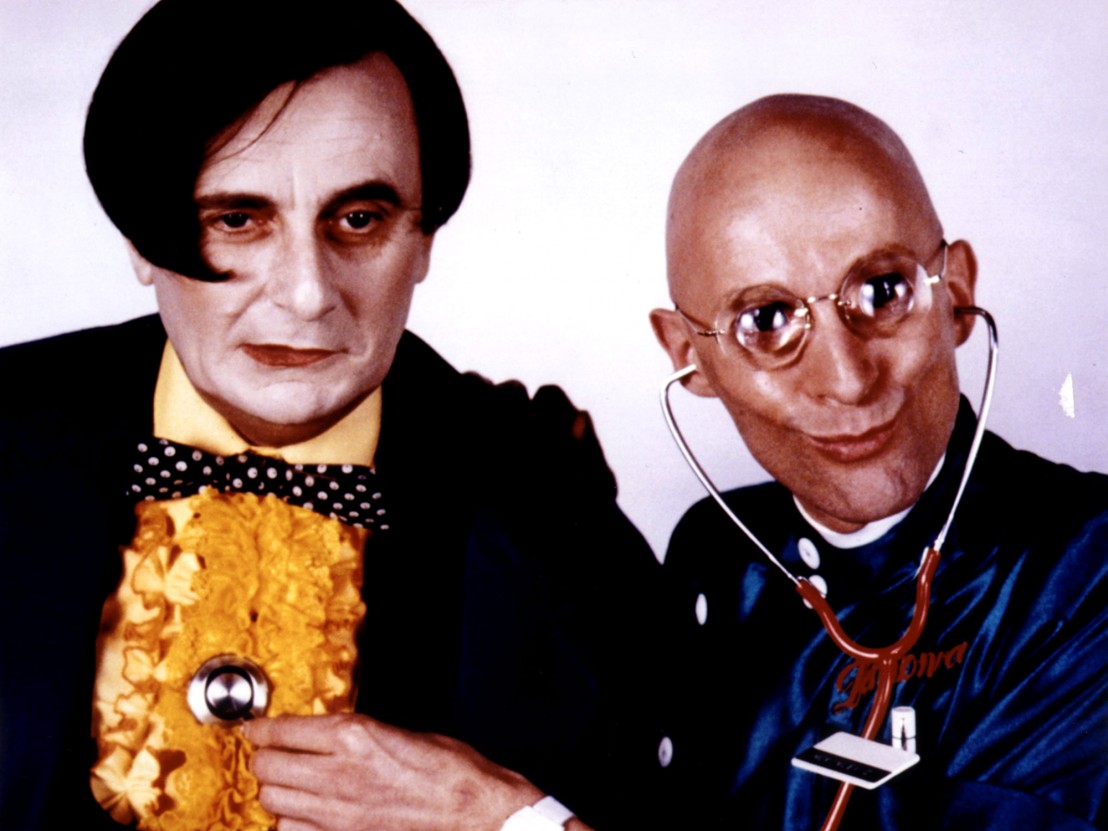
It’s a few years since Brad Majors and Janet Weiss escaped the leather-clad clutches of Dr Frank-N-Furter and his frenemies. Back in their native Denton, USA – the so-called “home of happiness” – their marriage has hit the skids. While attending a live taping at their local TV station, they become embroiled in a series of interrelated game shows. This plays out in front of ever-present townspeople, who soak up the C-list exploits 24/7.
So goes the plot of Shock Treatment, the maligned sequel to cult staple The Rocky Horror Picture Show. Before its theatrical release, the creator, composer and star Richard O’Brien said, “It’s not a sequel, it’s not a prequel, it’s an equal.” Audiences and critics disagreed.
Like its older sibling, it was directed by Jim Sharman, produced by Lou Adler and Michael White, and featured several of the same key cast members. Just like Rocky Horror, it was a box office flop – one that O’Brien went so far as to call “an abortion”. The musical black comedy was foisted upon the midnight circuit in 1981. Though it celebrates its 35th anniversary this Halloween, it remains mostly obscure. Would Shock Treatment be remembered were it not positioned in the stilettoed shadow of its big sis?
Produced at the height of Rocky Horror’s cult frenzy, it failed to garner the titillating ubiquity of its forebear. A healthy dose of ‘easter eggs’ couldn’t convert even Rocky Horror’s most devoted disciples, who were deterred by the conspicuous absence of core cast members Tim Curry, Susan Sarandon and Barry Bostwick, among others.
Cult films are like Domino’s pizzas. You can’t scrimp on ingredients, deliver at midnight and expect everyone to love it. But when either comes with extra cheese, it’s definitely a plus. With its synth-heavy soundtrack, saturated neon palette and hammy performances, Shocky’s certainly not as gouda cult movies can get. But for all its flaws, the film deserves recognition at least for its prescient prediction of reality TV and the coming devotion to the cult of celebrity.
Sure, the premise seems absurd. Fast food tycoon Farley Flavors (one of two characters played by Cliff De Young) owns a television station, which is seemingly home to the town’s entire population. Plucked from the crowd, Brad (De Young again) and Janet (Suspiria’s Jessica Harper) try their hand at the Marriage Maze game. They soon find themselves committed and seduced, respectively, by the kooky cohorts who run the joint. Among them are O’Brien, Patricia Quinn and Nell Campbell, playing new wave exports of their Rocky Horror foils, and providing familiar faces to the core audience.
They’re joined by such inexplicable new casting choices as Ruby Wax (taking over minor Rocky Horror role Betty Hapschatt), Barry Humphries (arbitrarily Austrian game show host Bert Schnick) and baby-faced Rik Mayall in one of his first roles (‘Rest Home’ Ricky, an orderly at the station’s on-site mental health ward).
A carnivalesque crowd (strewn with former Transylvanians) watches in real time as the soap operatic narrative unfurls over 36 hours, ad break inclusive. Brad is seen bound, gagged and locked away on the Dentonvale set, while Janet flaunts her newfound sexuality on the breakfast show. When Janet refuses to sell her husband out in exchange for smalltown stardom (reminiscent of her role in Phantom of the Paradise – Rocky Horror’s glam rock godmother), the cast, crew and crowd spurn the couple, just as real world audiences would with Shock Treatment itself.
Criticised for its convoluted plot – the result of excessive redrafting – perhaps Shock Treatment was misunderstood because it arrived dreadfully ahead of its time. O’Brien depicts reality TV, and society’s interest in the sex lives of strangers, twenty-plus years prior to The Bachelor’s premiere. Denton’s addicted masses crave content around the clock, and they’re wholly invested in the shows they watch, almost three decades before Netflix began streaming. Shock Treatment shows how advertising and sponsorship influence production, and even explores the link between media and mental health – one of today’s most pertinent Western concerns.
With the 2016 remake of The Rocky Horror Picture Show comes a tidal wave of pop proprietary scorn, decrying this cinematic era of remakes, reboots, prequels, sequels and spin-offs. (Re)visit Shock Treatment for a filmic follow-up that was satirical, psychic and truly inventive.
Published 20 Oct 2016